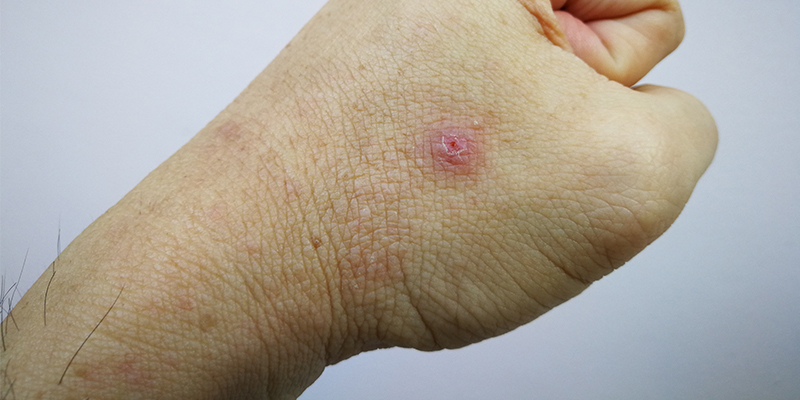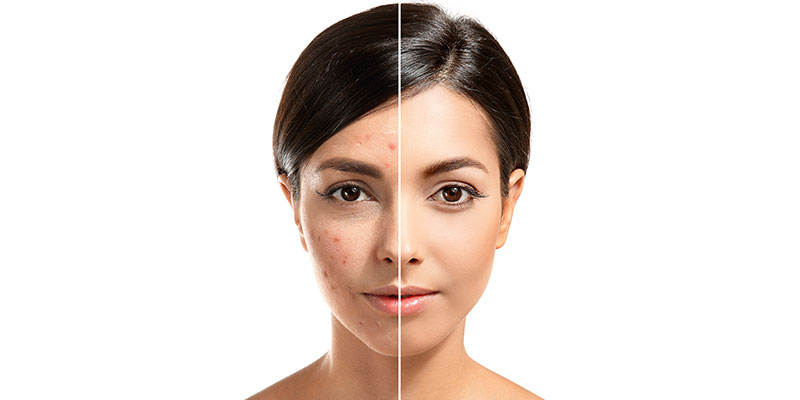Types of Warts: Causes, Treatment & Prevention Tips
Have you ever noticed raised bumps or growths on your skin? If your skin appears and feels thick or hardened in a spot, it may be due to warts. Warts are non-cancerous growths caused by the papillomavirus (HPV) family commonly seen on hands and feet. While warts are harmless, they may pose an aesthetic concern. Sometimes, they may even cause pain and bleeding and require immediate medical intervention. Keep reading below to know what causes warts, their types, the treatment solutions and how to prevent them.
Types Of Warts
Medical experts classify warts into different types according to their appearance, HPV strain, what causes them, and the parts of the body they affect. They require customised treatment for each type. These include:
- Common Warts
- Flat Warts
- Filiform Warts
- Mosaic Warts
- Plantar Warts
- Genital Warts
Let us learn about each type in detail, including its causes, treatment and prevention tips.
Common Warts
Common warts are rough and raised bumps on the skin that often contain tiny black dots. These pea-sized skin growths usually develop on the back of the hands, fingers, nails, and feet. Common warts vary in size from 1mm to 1cm or larger. They do not cause any pain and usually go away on their own.[1]
Causes
These usually appear when the skin breaks due to bitten fingernail. That’s why they contain blood clots that look like black dots or seeds. They appear grainy, and their head often resembles cauliflower.
Treatment
The dermatologist may prescribe OTC medications containing salicylic acid or topical antibiotics to heal the wart faster.
Prevention Tips
- Avoid picking at warts.
- Avoid biting the fingernails.
- Avoid touching the wart directly.
- Keep your hands and feet clean.
Flat Warts
Also known as plain warts, these warts are smooth and flattened bumps that can develop anywhere on your body. Caused by HPV types 3, 10, and 28, flat warts grow in large numbers at a time. They are usually small and appear brown in colour.
Causes
Flat warts appear in the areas where the skin breaks due to a cut or injury. It is common to get them after shaving your legs and face. These warts are common in children and can spread through contact.
Treatment
The treatment for flat warts involves OTC medications that help accelerate the healing process.
Prevention Tips
- Avoid touching them directly, as they often spread through contact.
- Shave carefully so that you do not cut your skin.
Filiform Warts
These types of warts are thread-like and spiky in appearance and usually affect the area around the eyes. They grow very fast and look like tiny brushes projecting from the skin. Although they are harmless and do not cause any pain, they are bothersome.
Causes
These flesh-coloured warts are highly contagious. Human papillomavirus (HPV) causes filiform warts in the areas where the skin breaks.
Treatment
Filiform warts are non-cancerous and harmless. The dermatologist often prescribes topical solutions to help peel warts away. In some cases, they may also suggest advanced electrocautery procedures using radiofrequency.
Prevention Tips
- Do not touch the wart directly. And if you do, wash your hands properly.
- Avoid picking at it.
- Make sure that the area around the wart is dry.
Mosaic Warts
As the name suggests, these warts occur in clusters, most commonly affecting the feet and under the toes. These look white or flesh-coloured and come in the size of a pinhead. They are painless and rarely hurt when you walk.
Causes
Human papillomavirus (HPV) causes mosaic warts. They often spread through contact with a person already having them. They can also occur if you touch a contaminated area, such as the floor of a common bathing area or swimming pool, with your bare feet.
Treatment
The treatment usually involves applying topical medication containing salicylic acid or lactic acid or freezing the wart through cryotherapy. The dermatologist may also suggest oral antibiotics to heal warts faster or minor surgery.
Prevention Tips
- Avoid wearing shoes that are not comfortable.
- Avoid sharing your personal items with anyone, such as pumice stones, razors or other tools.
- Avoid walking barefoot in public showers and swimming pools.
- Keep the warts covered.
Plantar Warts
Plantar warts often grow in the soles of the feet or toes and feel uncomfortable while walking. Unlike other types of warts, they grow into the skin. They may also spread to the ankles. Most plantar warts are skin-coloured, having a thick and rough texture. Some plantar warts have black coloured dots on their surface.[2]
Causes
These usually occur due to pressure caused by standing for long hours or walking. Human papillomavirus (HPV) causes plantar warts when it enters the skin through minor cuts or weak spots.
Treatment
The dermatologist may suggest topical medication to dissolve the wart. In some cases, they may recommend freezing of warts or in-office surgery.
Prevention Tips
- Avoid touching or scratching the warts directly, as it may spread the infection.
- Keep your feet clean and dry.
- Wear slippers while walking around gym showers or swimming pools.
- Avoid sharing your shoes, socks and towels.
- Cover your warts when swimming.
- Change your socks daily.
Genital Warts
These look like nodular growths or clusters of bumps that develop on the genitals or the areas around them. They occur separately or in clusters and tend to be skin-coloured. Some genital warts may cause itching, discomfort, or redness.
Causes
The genital warts are a manifestation of sexually transmitted infection caused by the human papillomavirus (HPV). They are contagious and spread through sexual activity.
Treatment
While some genital warts disappear on their own, most of them require medical intervention. The dermatologist may prescribe treatment depending on the size, number, and location of warts and the severity of the condition. The doctor may start the treatment using topical medications and recommend laser treatment, surgery or excision to treat these warts completely.
Prevention Tips
- Avoid having multiple sexual partners.
- Do not touch or pick the wart; you may risk spreading the infection.
- Maintain good sexual hygiene.
- Use a condom during sex.
- Keep the wart covered.
When To Visit A Dermatologist?
If you notice some skin growths on different body parts, such as the face, around the eyes, genitals, or hands and feet, consult the dermatologist to ascertain if these are warts. Consult a dermatologist immediately if you notice –Your wart is bleeding.
- You notice any signs of infection.
- You have warts on sensitive areas such as nostrils and genitals.
- The wart becomes painful.
- There is a change in colour, shape or size.
- You notice a recurrence of warts.
- Your hands and feet sweat badly.
- You have any medical condition such as immune deficiency (HIV or AIDS) or diabetes.[3]
Takeaway
Warts are usually harmless and resolve on their own. However, they can be contagious and spread through direct or indirect contact. Experiencing warts on the genitals, nostrils, face or around the eyes can be uncomfortable. It is best to consult the dermatologist and seek immediate treatment. Apart from topical medications, advanced electrocautery procedures help to remove warts from the root and prevent them from coming back.[4]









